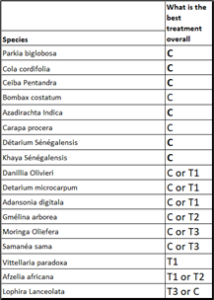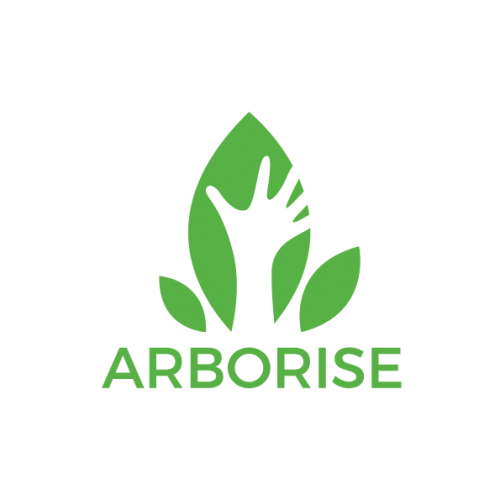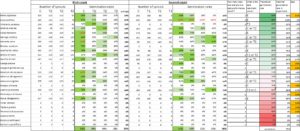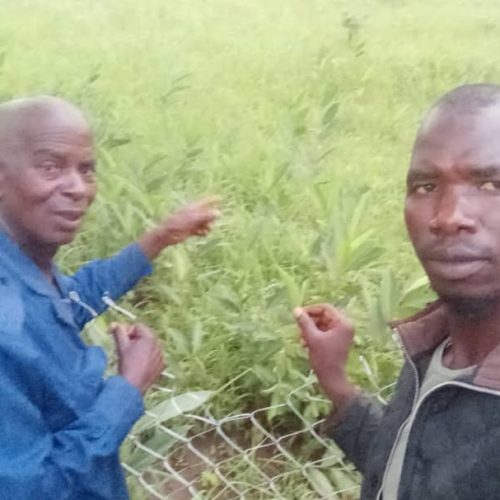Final results of the field experiment
As a reminder (see publications of 15 August and 15 September), our scientific experiment, funded by the Research Challenge of ETH for Development, aimed to measure the impact of seed coating on the germination rate. What were our findings?
Out of 40 selected forest species, seeds of 26 species could be harvested. The remaining 14 species could not be identified in time. A first shoot count took place in mid-July. This was followed by a second verification count in mid-August. These counts were made difficult by the abundance of weeds present in the field. This explains certain inconsistencies, indicated in red in the table below:
Of the 26 species in the experiment, 17 (65%) had already germinated two months, respectively three months, after sowing. The correlation between the maximum germination rate per species obtained in the experiment and the theoretical germination rate according to scientific sources is 68%. On average the maximum germination rate per species in the experiment reaches 54%, while their theoretical germination rate is 69%.
Before analysing the impact of the seedballs technique we wanted to understand why eight species have a germination rate at least 30% lower than the theoretical rate. What could be the reasons for this?
- Parkia biglobosa (68% vs 99%): the physical dormancy of its seeds is important and it is possible that our pre-treatment was not sufficient to lift this dormancy or that germination is simply slower for this species.
- Carapa procera (35% vs. 80%): the seeds of this species are recalcitrant. It is likely that some have dried out before sowing and thus lost their germination capacity.
- Syzygium guinéense spp (0% vs. 80%): The seeds, also recalcitrant, should be sown immediately after harvesting the fruit according to Prota4U, as they may spoil within 24 hours of storage. In this case too, the seeds may have waited too long before being sown.
- Prosopis africana (0% vs. 70%): “The results show a high production of seeds, most of which are either attacked or rotten. Despite the existence of integumentary dormancy, Prosopis africana seeds are able to germinate in situ in the absence of fire and livestock, but with a fairly long lag time”[1]. To avoid seed rotting under the seed tree, harvesting on tarpaulin might have been necessary.
- Pterocarpus erinaceus (0% vs. 50%): Physiological dormancy is low and it is surprising that the treatment was not sufficient to lift it, especially as germination should start 6-10 days after sowing according to Prota4U. Perhaps the seed quality was poor?
- Tectona grandis (0% vs 30%): According to Prota4U: “The teak ‘seed’ is actually a fruit that can contain up to four true seeds. […] Generally, there are one to two viable seeds per fruit, but sometimes the fruits are sterile. Germination of the same batch of seeds can start after about ten days and end after several years; the optimum germination time is about 35-45 days. Dormancy is difficult to lift and no really reliable technique has been developed. [To promote germination, the seeds should not be completely buried and should not be shaded. It is possible that the seeds were sown too deep in the soil and that the pelleting impaired germination.
- Vitex doniana (0% vs. 34%): According to Prota4U, untreated fruit can take a long time to germinate and it is possible that fire accelerates germination. Indeed, physiological dormancy is important and the intensity of treatment we applied was probably not sufficient.
- Terminalia Glaucescens (0% vs. 30%): It is possible that the seeds of this species are recalcitrant. In addition its physiological dormancy is important.
This short analysis allows two conclusions:
- The seedball manufacturing process, which requires a period of seed storage, has a negative impact on the germination rate of the recalcitrant species: of the 6 recalcitrant species among the 26, 3 species (50%) have a significantly lower germination rate than normal, in our experiment.
- On the other hand, dormancy has little influence on the germination rate when using the seedball method: of the 12 species that require an intense treatment to lift dormancy, 7 species germinated normally. Of the 14 species that require only a moderate treatment to break dormancy, 3 species germinated poorly.
Contrary to the hypothesis that anemochorous, barochorous and autochorous species should be better adapted to direct-seeding and seedball protection, the results show no significant relationship between seed propagation type and germination in direct seeding:
- 6 out of 8 anemochorous species germinated (75%)
- 10 out of 15 zoochorous species germinated (66%)
- 1 out of 3 barochore species germinated (33%)
Regarding the treatments applied, the no treatment (group C) and the T1 treatment (soaking) produced the best results on average, for both counts.
For eight of the 17 species that germinated, no treatment produced the best results in both counts. For six other species no treatment was superior in one of the two counts. Only 3 species preferred treatments, but in 2 cases it was soaking (which is anyway provided at the rainy season). Only one species, Lophira lanceolata, benefited from coating, in one of the two counts.


Hence it seems possible to conclude that, under the climatic and ecosystemic conditions of Linko, for the above species except for Lophira lanceolata, Vitellaria paradoxa and Afzelia africana, the absence of treatment leads to a better germination rate. Contrary to our main hypothesis, seed coating (seedball method) has a lesser or even counterproductive impact on germination rate. Burying the seeds untreated in small holes seems to be sufficient to protect them from birds, rodents and pests.
This is a major learning for the arboRise project: giving up seed coating will significantly simplify the planting process. In addition, the resources allocated to pelleting can be used to double the quantity of seeds harvested and thus reach a density of 10,000 seeds per hectare, or 1 seed per m2.
The survival rate on the experimental plot will be measured one year after sowing, in May 2023. Afterwards, the plants that have survived on the experimental plot will be used to collect cuttings, which will be useful for enriching the fields reforested by arboRise.
[1] Niang Diop F., Sambou B., Lykke A. M. : Contraintes de régénération naturelle de Prosopis africana : facteurs affectant la germination des graines, International Journal of Biological and Chemical Sciences, 2010, p. 1693-1705. file:///C:/Users/phili/Downloads/65578-Article%20Text-130554-1-10-20110415%20(1).pdf


